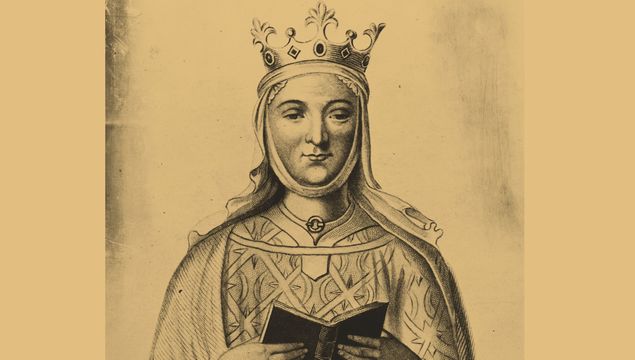
Eleanor of Aquitaine was a major figure in the Middle Ages and a prominent figure in women's history. So what do we need to know about this remarkable woman?
A quick overview
The eldest daughter of William, Duke of Aquitaine, Eleanor was married to Louis VII, King of France. During the Second Crusade, her relationship with her husband soured, and in 1152, they officially divorced. Shortly afterward, she married Henry of Anjou, who in two years would become King Of England.
The royal couple had 8 children, five sons, and three daughters. Queen Eleanor of Aquitaine remained heavily involved in the ruling of King Henry II's vast empire in France and England.
In 1173, Henry's sons started a revolt against their father with Eleanor siding with her sons. Henry stifled the revolt and, as punishment for her involvement, confined her. Henry II died in 1189, and Richard II, the Lionhearted, became king.
Another of her sons, John, rose against Richard along with the King of France. Eleanor supported Richard. Later, when her grandson tried to claim the throne, she supported John. She died in 1204 at the age of 82.
This restless queen swept across the 12th century, changing the face of Europe.
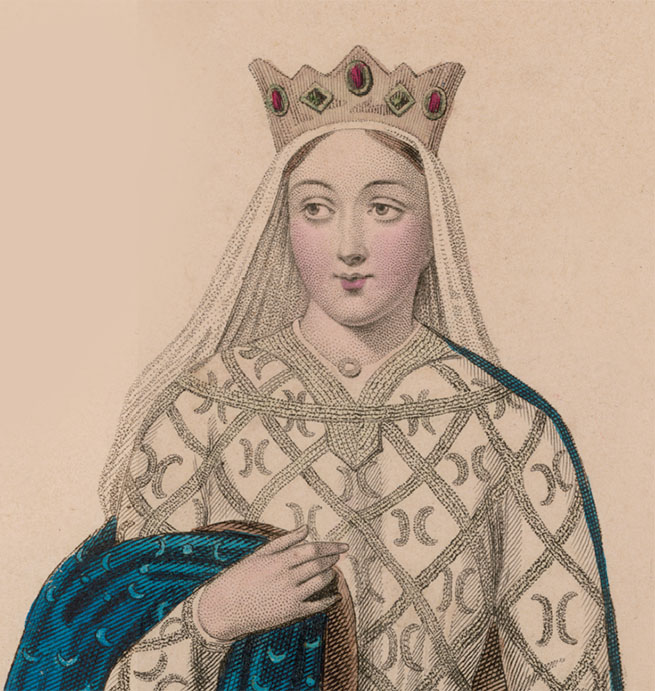
MARY EVANS PICTURE LIBRARY
The role she played
Endowed with intelligence, creative energy and a remarkably long life. Eleanor of Aquitaine played a major role in the 12th century, an impressive achievement given that medieval women were considered nothing more than chattel. Assets of brains and enterprise served her well in the chaos of the time; unrelenting hostilities between Plantagenets and Capets, crusades and struggle between church and state. They equipped her to advance civility in a ruthless era by promoting the songs of troubadours and the ideals of courtly love. Even in a century of imposing personalities—the likes of Thomas Becket, Bernard of Clairvaux and Peter Abélard—Eleanor took center stage.

(Via Twitter).
As the queen consort of King Louis VII of France and of King Henry II of England, and as the mother of King Richard I and King John, she held the spotlight, wielding power over the most important men of her time. She was the daughter and heir of the imperious William X, Duke of Aquitaine and Count of Poitiers, who possessed the largest domains in northwest Europe, indeed larger than those held by the king of France. When her father died in 1137, she came into her inheritance and, complying with the dictates of a territorial agreement, at age 15 married the heir to the French throne. Barely a month after the wedding, King Louis VI died, thrusting Eleanor’s 16-year-old groom to the throne of France.
Eleanor found court life as queen of France stultifying. Her timid, sweet-tempered and devout husband exasperated her. Formed during her childhood at the court in Poitiers where she was rarely disciplined and always admired, her strong ego impelled Eleanor to create a lofty royal vision for herself, one that did not encompass the subordinate role as queen of France.
After a decade of marriage she was as beautiful and capricious as ever, but even more headstrong and domineering toward Louis. From 1147 to 1149 she accompanied him on the Second Crusade. According to Simon Schama in A History of Britain, while Louis took the cross to atone for his sins, “Eleanor went with him in a magnificent rather than penitential style,” adding, “Dismayed to discover that crusading was an arduous, pious business, she quickly developed an unhealthily warm relationship with her uncle, the slightly impious Raymond of Poitiers.” Raymond apparently ensconced at Antioch for the duration of the crusade, aroused Louis’jealousy, which caused an estrangement between Eleanor and Louis.
Though at one time Louis had adored his wife, after 15 years of marriage he was willing to let her go for the sake of the Capetian royal line. She had not borne him a son and heir, only two daughters. Eleanor, on cue, illuminated her predicament, explaining that her husband’s infrequent visits to her bed accounted for the fruitlessness of their union. In the end, the marriage was annulled on the convenient grounds of consanguinity: Eleanor and Louis were too closely related for the church to tolerate.
Read more
After her marriage
Following the dissolution of her marriage, Eleanor regained possession of Aquitaine and Poitou. This wealth combined with her loveliness attracted suitors well before the annulment was final, one of whom was Henry of Anjou (a domain bordering Poitou), soon to be known as Plantagenet. Most historians agree that Eleanor and Geoffrey of Anjou, Henry’s father, were sexually intimate before she met Henry. Schama notes, “It was rumored that Geoffrey of Anjou had personally verified Eleanor’s appetite for passion before recommending her to his son.” Be this as it may, 30-year-old Eleanor and 18-year-old Henry felt passionately attracted to one another. Henry’s unsurpassed physical courage and keen political acumen resonated with Eleanor’s ambition for power.
Schama writes, “Barely eight weeks after Eleanor’s divorce in May 1152, Henry stood at the altar beside this considerably older woman whom all contemporary accounts describe as a dark-eyed beauty, disconcertingly articulate, strong-minded and even jocular and not at all the modestly veiled damsel in the tower.” For her part, Eleanor was willing to look beyond her groom’s stocky frame, barrel chest and boyish freckles to his arrogant self-confidence and royal objectives. Though they may have had little in common because of the age difference, the pair shared similar backgrounds. “Their native worlds,” writes Schama, “were not all that far apart…knights astride brightly caparisoned chargers thudding into each other in the lists or obliging their overlords by burning down the opposition’s manors.”
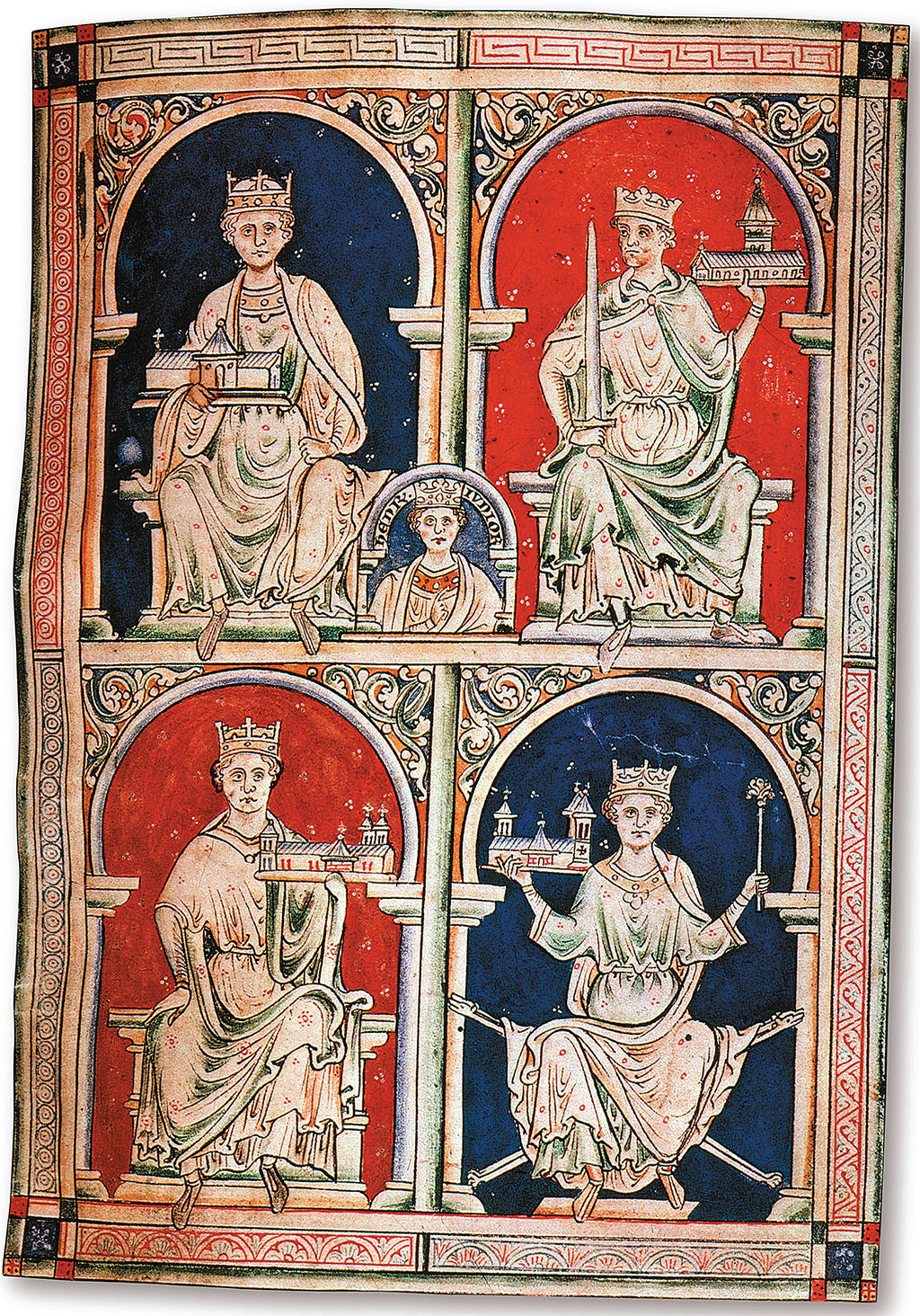
(Via: Granger Collection, New York).
Two years after the wedding, Henry became King Henry II of England, and Eleanor his queen. Stretching from the Pyrenees in the south to the Cheviots in the north, their empire was indeed vast. Their Plantagenet offspring would rule England and parts of the Continent for the next 330 years, an era of insatiable royal ambition, family jealousies, and territorial overreach.
During a tempestuous marriage of nearly 40 years, Eleanor and Henry produced seven children who survived to adulthood, four of whom were sons. The oldest surviving son, known as the Young King Henry, died of dysentery at age 28 while leading troops in rebellion against his father. Another disloyal son, Geoffrey, Duke of Brittany, died a mysterious death in Paris, also at age 28. Eleanor’s favorite son, Richard the Lionheart, and Henry’s favorite, John Lackland, would both, in turn, inherit the crown of England. Throughout her childbearing years, Eleanor participated in the administration of the realm, particularly in the management of her own domains, Aquitaine and Poitou.
Accounts of Eleanor’s activities at court in Poitiers reveal a softer side to this aggressive woman. Captivated by the romantic legend of King Arthur and stories of the knights of his Round Table, she filled the court with troubadours whose performances evoked King Arthur’s world—a milieu of chivalry and courtly love. The precepts of chivalry held that women were to be silent, passive goddesses to be approached with reverence. Perhaps the troubadours’ tales appealed to Eleanor because of their contrast to her callous life of action.
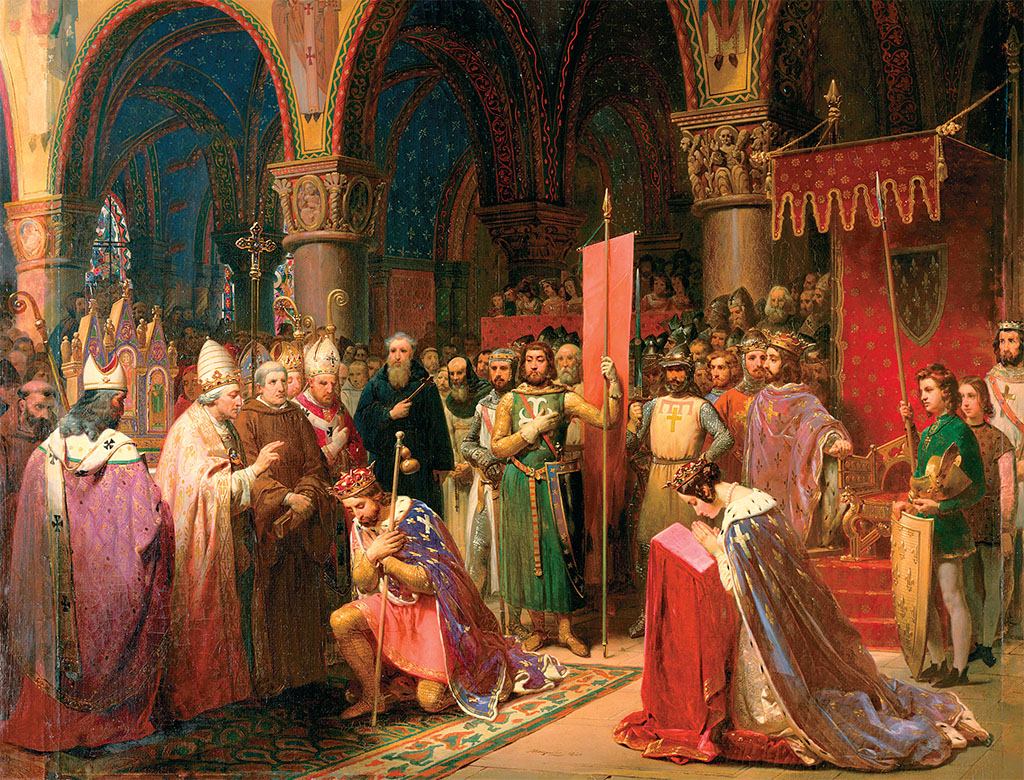
In an 1840 painting by Jean Baptiste Mauzaisse, young Louis VII, Eleanor’s first husband, takes the banner of St. Denis in 1147. The original hangs at Versailles.
Chivalry notwithstanding, circumstances anchored her in reality. Time after time her adult sons’ intermittent revolts against her husband lured her attention away from cultural pursuits. When her sons staged a rebellion in 1173 Eleanor gave them support in the form of troops and money. Indeed, some historians believe that Eleanor initiated the plot. She and Henry had long been estranged, the 12-year age difference proving an obstacle in the marriage. Eleanor resented Henry’s infidelities, particularly his blatant association with the fair Rosamund (a beauty much lauded by English poets). Yet more important than Eleanor’s resentment was her consummate ambition for personal power. She believed that with one of her sons on the throne, she herself would rule England.
Quest for power
The rebellion failed and King Henry II held the throne intact, and for her role in the drama, Eleanor was confined under guard at various castles throughout Henry’s kingdom. When her imprisonment ended with her husband’s death in 1189, Eleanor, undaunted at age 67, returned with a vengeance to public life. Schama points out that she greeted the death of Henry with dry eyes, and continues, “With Richard—a character formed by her own educated passions—finally seated on the throne, she could assert herself again in the business of state.”
Her opportunity came on the heels of King Richard’s coronation, an event she stage-crafted with the fullest measure of pageantry. The Third Crusade was underway and crusading fervor had enveloped England. Yet Eleanor viewed the rescue of the Holy Land from the Turks as a distraction from the business at hand; the real concern, she believed, was not Saladin but the preservation of the House of Plantagenet, particularly in England. Against his mother’s advice, King Richard was determined to join the crusade, a decision undoubtedly fueled by childhood exposure in Poitiers to his mother’s world of chivalric idylls. Like an Arthurian knight, he would travel with courage and honor to rescue the besieged city of Jerusalem.
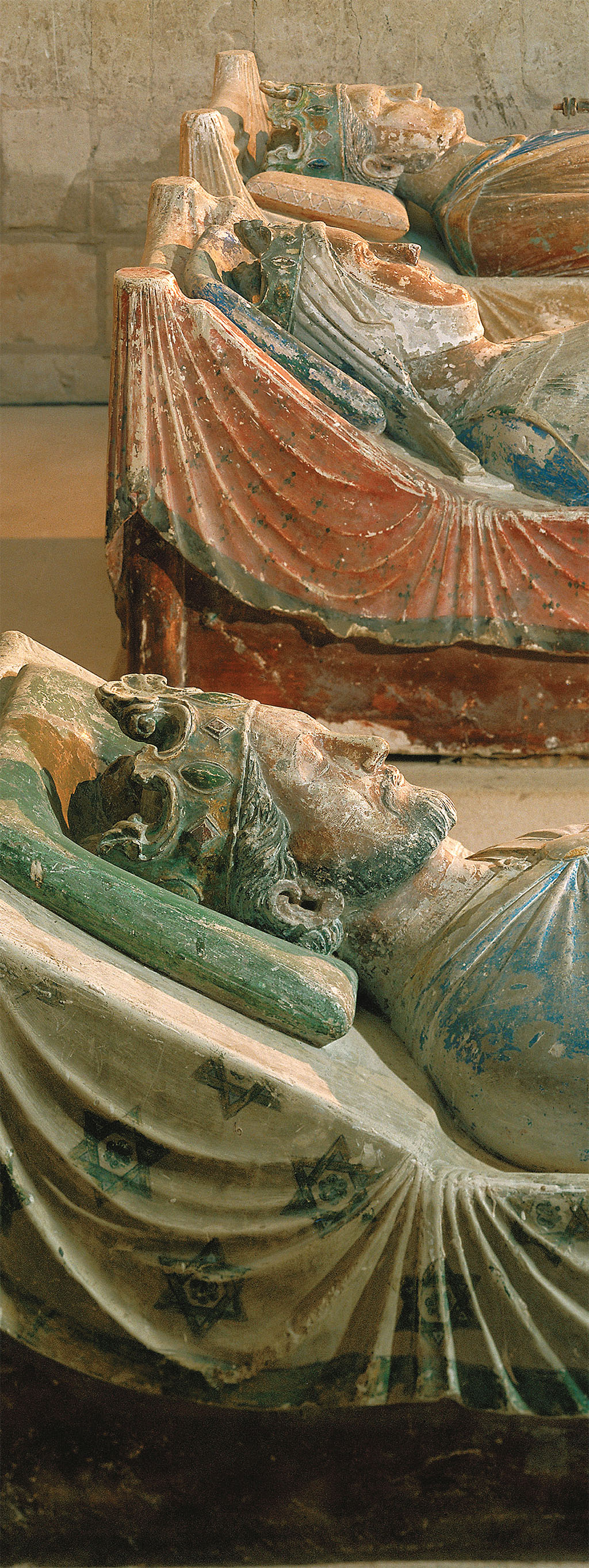
At Fontevrault Abbey, France, Eleanor’s tomb lies between those of her husband, Henry II, and her favorite son, Richard the Lionheart.
King Richard was away for five years, during which time his mother ruled England as administrator of the realm, simultaneously thwarting the intrigues of his brother John Lackland in his attempts to seize the throne. Participation in the crusade did not account for Richard’s entire absence. While returning from the Holy Land he was captured and taken prisoner by the Duke of Austria. Characteristically competent and resourceful, Eleanor not only collected her son’s considerable ransom but also made the formidable journey to Austria to escort him back to England. King Richard the Lionheart died in 1199 near Aquitaine, besieging a castle belonging to a rebellious vassal.
Because he died without an heir, Richard’s younger brother, and least capable of Henry and Eleanor’s brood, John was crowned king. From the outset of his reign, territorial wars against the Capetian rulers of France occupied King John. With typical political savvy, Eleanor resolved that her granddaughter Blanche should marry the son of the French king, thus initiating peace between the Plantagenets and Capets. Amazingly, in 1200 when she was nearly 80 years old she crossed the Pyrenees on horseback to fetch Blanche from the Court of Castile.
Still, her work was not completed. That same year, in order to secure King John’s continental possessions, Eleanor helped him to defend Anjou and Aquitaine against her grandson Arthur of Brittany (son of Geoffrey). Records show that in 1202 King John was again in his mother’s debt for holding Poitou against Arthur. But that apparently was her final curtain call. Following the battle, she retired to the monastery at Fontevrault in Anjou, where she died in 1204.
In the years immediately following her death, historians judged Eleanor harshly, spotlighting only her youthful indiscretions and ignoring the political wisdom and tenacity that marked the years of her maturity. The nuns of Fontevrault, however, wrote in their necrology, “She was beautiful and just, imposing and modest, humble and elegant.”
* Originally published in June 2006.





Comments